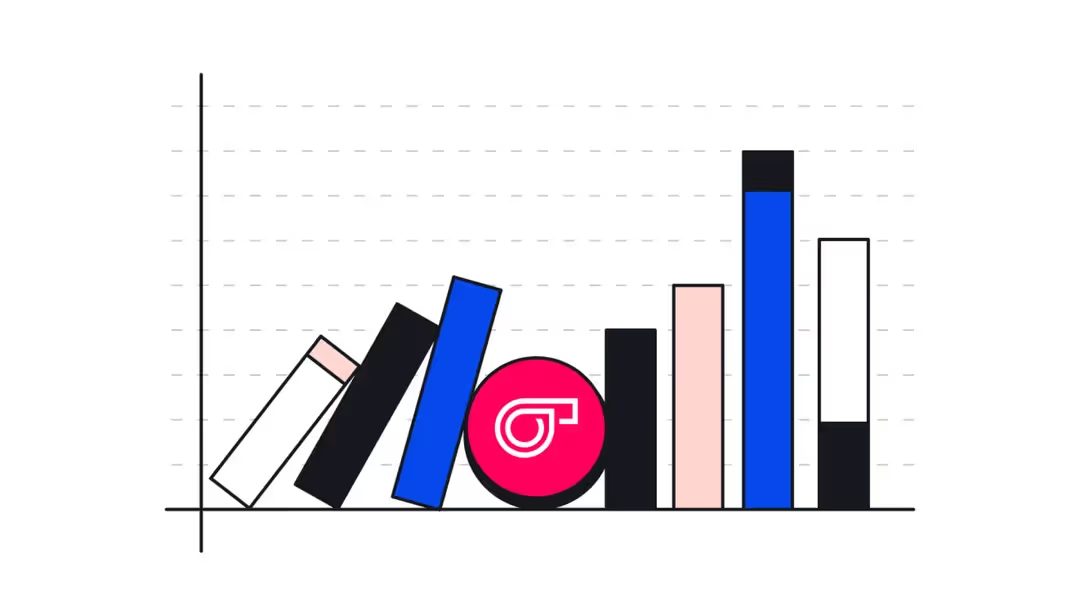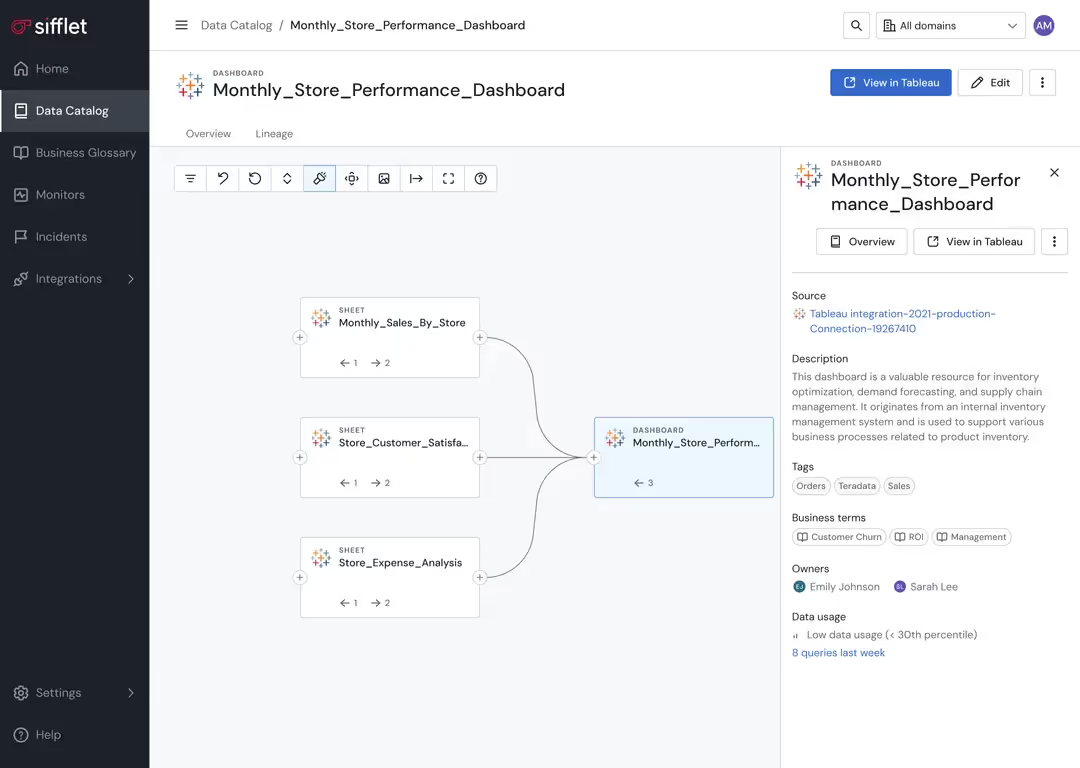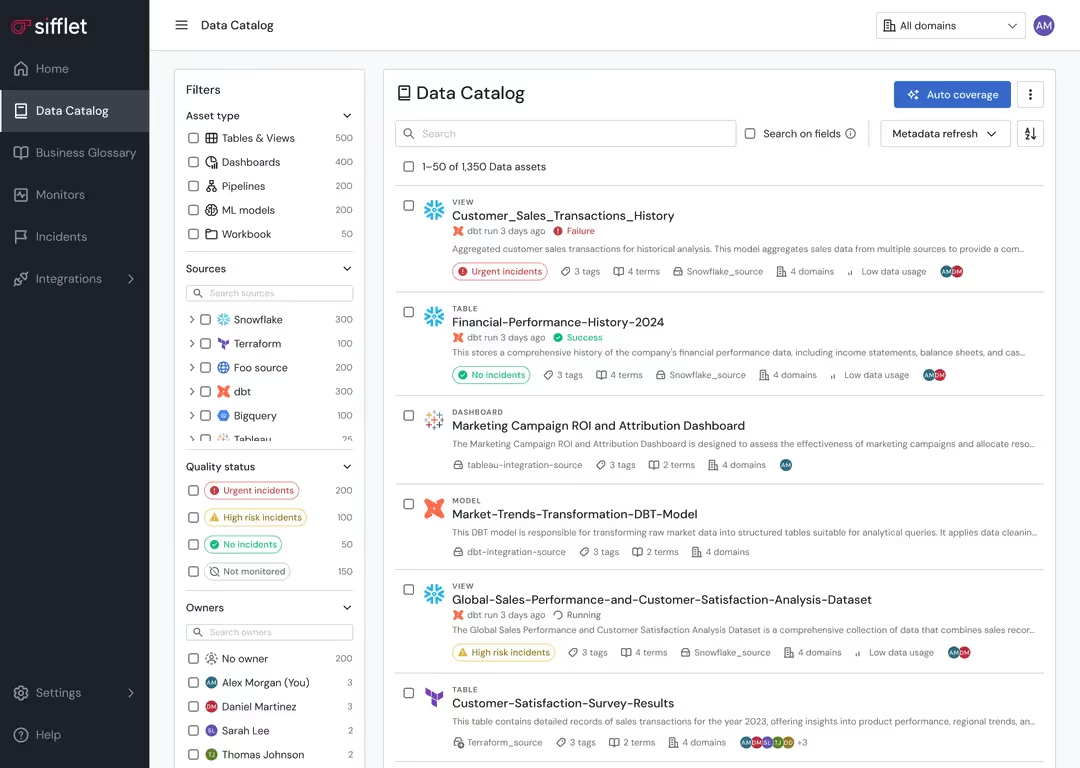Big Data. %%Big Potential.%%
Sell data products that meet the most demanding standards of data reliability, quality and health.















Identify Opportunities
Monetizing data starts with identifying your highest potential data sets. Sifflet can highlight patterns in data usage and quality that suggest monetization potential and help you uncover data combinations that could create value.
- Deep dive into patterns around data usage to identify high-value data sets through usage analytics
- Determine which data assets are most reliable and complete

Ensure Quality and Operational Excellence
It’s not enough to create a data product. Revenue depends on ensuring the highest levels of reliability and quality. Sifflet ensures quality and operational excellence to protect your revenue streams.
- Reduce the cost of maintaining your data products through automated monitoring
- Prevent and detect data quality issues before customers are impacted
- Empower rapid response to issues that could affect data product value
- Streamline data delivery and sharing processes















Still have a question in mind ?
Contact Us
Frequently asked questions
How can I monitor the health of my ETL or ELT pipelines?
Monitoring pipeline health is essential for maintaining data reliability. You can use tools that offer data pipeline monitoring features such as real-time metrics, ingestion latency tracking, and pipeline error alerting. Sifflet’s pipeline health dashboard gives you full visibility into your ETL and ELT processes, helping you catch issues early and keep your data flowing smoothly.
How does Sifflet support enterprises with data pipeline monitoring?
Sifflet provides a comprehensive observability platform that monitors the health of data pipelines through features like pipeline error alerting, data freshness checks, and ingestion latency tracking. This helps teams identify issues early and maintain SLA compliance across their data workflows.
Why is combining dbt Core with a data observability platform like Sifflet a smart move?
Combining dbt Core with a data observability platform like Sifflet helps data teams go beyond transformation and into full-stack monitoring. It enables better root cause analysis, reduces time to resolution, and ensures your data products are trustworthy and resilient.
Can I trust the data I find in the Sifflet Data Catalog?
Absolutely! Thanks to Sifflet’s built-in data quality monitoring, you can view real-time metrics and health checks directly within the Data Catalog. This gives you confidence in the reliability of your data before making any decisions.
How does the updated lineage graph help with root cause analysis?
By merging dbt model nodes with dataset nodes, our streamlined lineage graph removes clutter and highlights what really matters. This cleaner view enhances root cause analysis by letting you quickly trace issues back to their source with fewer distractions and more context.
How does Sifflet help with monitoring data distribution?
Sifflet makes distribution monitoring easy by using statistical profiling to learn what 'normal' looks like in your data. It then alerts you when patterns drift from those baselines. This helps you maintain SLA compliance and avoid surprises in dashboards or ML models. Plus, it's all automated within our data observability platform so you can focus on solving problems, not just finding them.
What kind of insights can I gain by integrating Airbyte with Sifflet?
By integrating Airbyte with Sifflet, you unlock real-time insights into your data pipelines, including data freshness checks, anomaly detection, and complete data lineage tracking. This helps improve SLA compliance, reduces troubleshooting time, and boosts your confidence in data quality and pipeline health.
What role does data ownership play in data quality monitoring?
Clear data ownership is a game changer for data quality monitoring. When each data product has a defined owner, it’s easier to resolve issues quickly, collaborate across teams, and build a strong data culture that values accountability and trust.




















-p-500.png)
